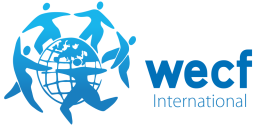Report on gender aspects of existing financial schemes for energy poverty measures
What do energy, poverty and gender have in common? Quite a lot. Low-income households spend a large part of their earnings on utility services such as electricity and heating and are usually unable to invest in energy-efficient appliances. This affects almost a quarter of the people living in the EU who are at risk of poverty and social exclusion. Moreover, women live in poverty more often than men (UN Women & World Bank Group, 2018).
Gender inequality increases the risk of women being exposed to energy poverty. In the study, we analyse support programs in Spain, France, Italy, Croatia, Slovenia, Germany and Albania, aimed at combating energy poverty, to see if they are planned or implemented in a gender-equitable manner. We have compiled recommendations for decision-makers on how to set up gender-equitable energy promotion programs. It provides instruments and mechanisms: such as gender analysis & monitoring, gender budgeting, communication and cooperation as well as awareness raising and trainings on gender-just tools. Central to the report is to ensure women’s equal access to energy and target group-specific communication.
In order to be able to uncover and combat the connection between gender inequality and energy poverty through gender equitable analysis approaches, gender-differentiated data that take intersectional impacts into account are an important basis.
In this report, you can learn about
- The concept of energy poverty in a nutshell
- Gender dimensions of energy poverty
- Analysis of surveys
- Good practice examples – how to integrate a gender dimension
This report was produced under the EmpowerMed Project. To learn more about the project, watch this video or visit the EmpowerMED website.


